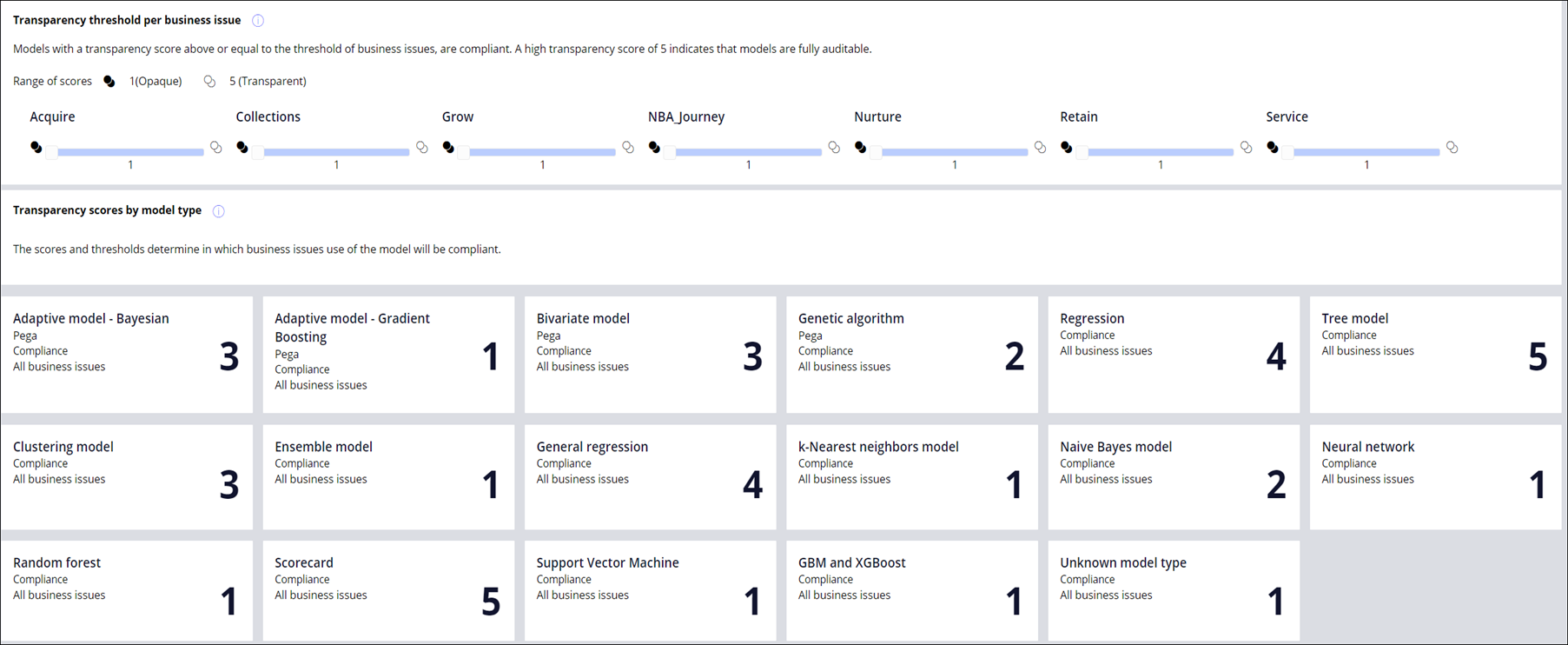Configuring model transparency policy
By configuring the transparency threshold for a business issue and optionally adapting the transparency score for models, lead data scientists determine which model types are compliant for that issue.
Non-compliant models might be forbidden to use by certain company policies. Each model
type has a transparency score ranging from 1 to 5, where 1 means that the model is opaque, and
5 means that the model is transparent. Highly transparent models are easy to explain, whereas
opaque models might be more powerful but difficult or not possible to explain. Depending on
the company policy, models are marked as compliant or non-compliant. Model compliance is also
included in the model reports that you can generate in the Prediction Studio.
- In the navigation pane of Prediction Studio, click .
-
In the
Transparency thresholds
section, set the transparency
threshold for each business issue.
The transparency threshold can be different for each business issue. For example, the Risk issue can have a higher threshold than the Sales issue. It means that models that are used for predicting risk need to be easy to explain.
- Optional: In the Model transparency scores section, change the transparency score for individual model types.
-
Click
Save.
Model transparency policies 
Previous topic Creating a business issue Next topic Creating a group
